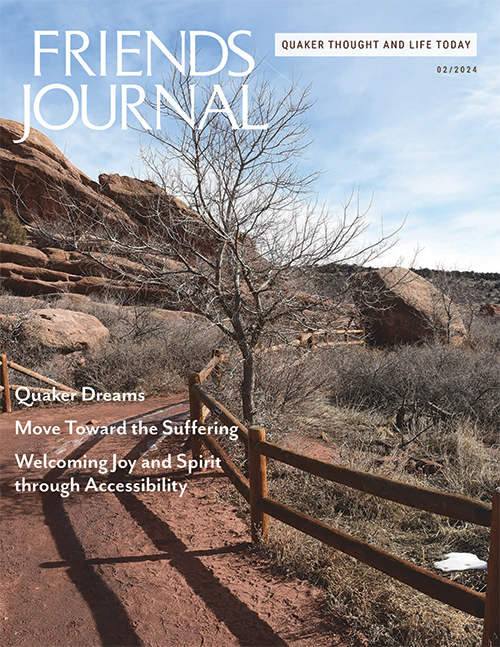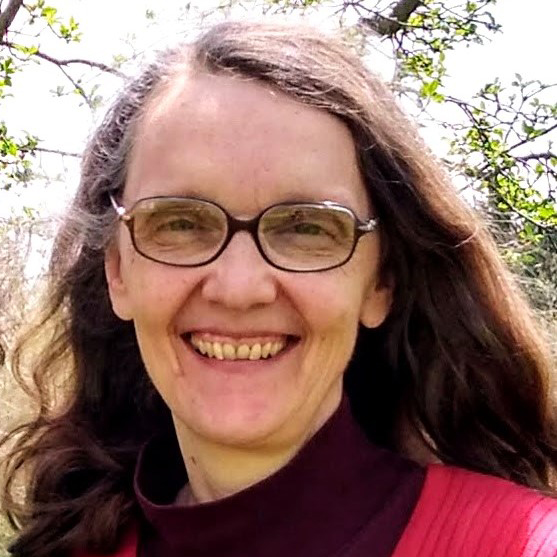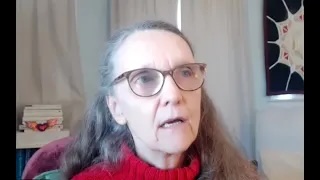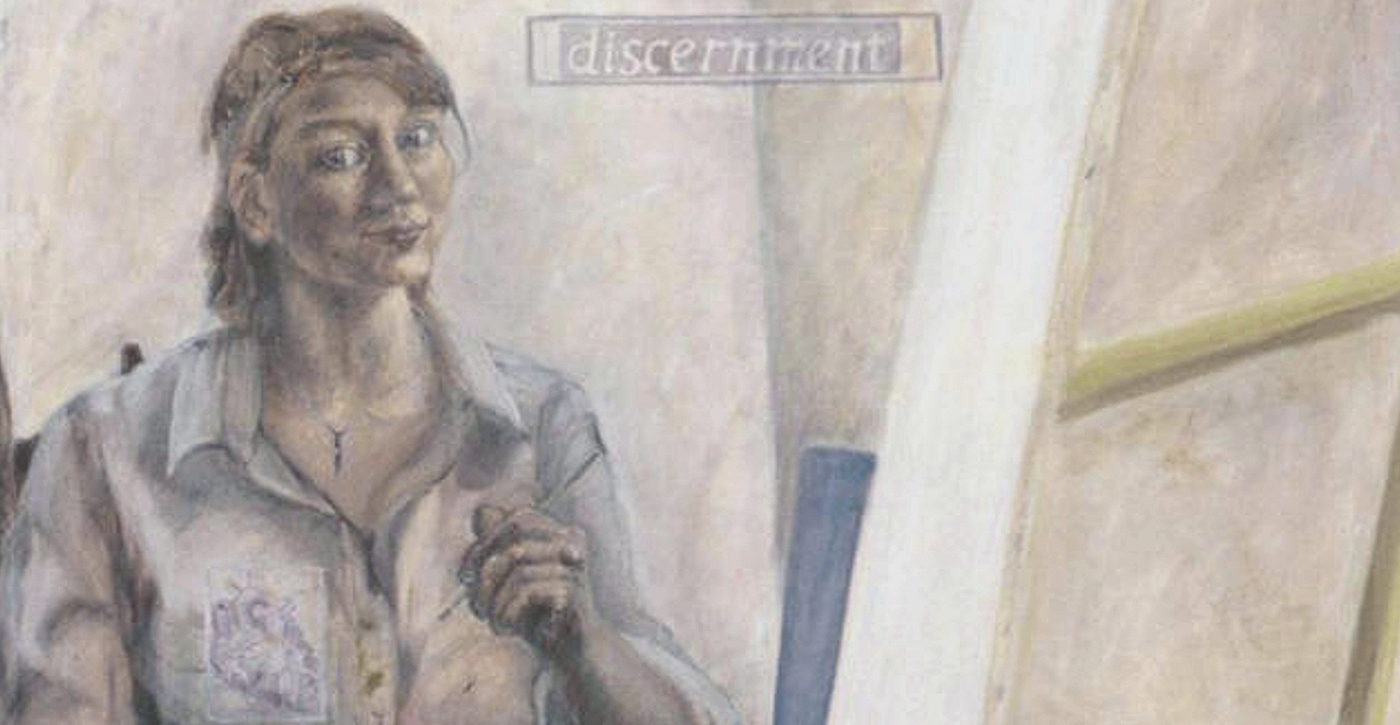Pathways to Inner Wisdom
Whether we remember our dreams or not, dreaming is an essential function of being human, necessary for our health and well-being. Dreams also offer us a doorway from the conscious mind to unconscious realms, including collective social forces, forgotten memories, creative inspiration, spiritual guidance, divine wisdom, and more. In Western culture, we have been trained to focus on the outer world, ignoring pathways of inner wisdom that could give us needed guidance to face the times in which we live.
Dreams predicted the beginning of Quakerism before it happened. Mary Penington was an ardent Puritan before the English Civil War. Widowed by the war in 1644, she lost faith in the various Puritan denominations and stopped attending church services. Still, she continued praying for guidance on a daily basis. In her time of grief, she had some remarkable dreams about a future religion. In one she saw Christ, in both male and female form, enter a large hall wearing plain gray clothes. Christ embraced a series of humble people, which she saw as a sign of his wisdom. Finally he beckoned her to come to him. When the Quaker movement began a few years later, it proclaimed that the Spirit of Christ can manifest itself equally in men and women. Several years later Quakers collectively began dressing in plain gray clothes.
In the 1640s George Fox, who was an apprentice shoemaker at the time, began to have direct revelations of Divine Truth; he traveled from one village to another, wearing leather breeches and a white hat and explaining the truth that had been revealed to him. Mostly simple country folk were receptive to his message. When he reached Swarthmoor Hall in 1652, shortly after his vision atop Pendle Hill, both master and mistress were out of the house. Fox waited in the hall, along with the local Puritan minister, and the two of them argued vehemently about religion. The minister left in anger. When Margaret Fell arrived at her home, Fox addressed her in a familiar way: with the pronouns “thee” and “thou.” She was affronted by his coarse attire and appalling manners and most likely would have asked him to leave, but a night vision had prepared her to make a different decision. She had recently dreamed of “a man in a white hat that should come and confound the priests,” according to Fox’s Journal. She allowed Fox to spend the night in the attic, where traveling guests often stayed. She and her children listened to Fox’s spiritual ideas, and their lives were transformed. Margaret Fell became one of the most devoted supporters of the Quaker way.
From the beginning, Quakers were wary of superstition and imagination. They sought Truth and were, therefore, cautious about dreams. In his Journal, George Fox tells of a time he encountered people he thought paid excessive attention to their night visions. He cautioned them that there were three kinds of dreams. Most just reflected the business of everyday life, and some were the influence of the devil. The third category was “the speakings of God to man in dreams.” The Scripture stories of Jacob, Daniel, Jacob’s son Joseph, as well as Joseph the husband of Mary, showed examples of this third category: divinely inspired dreams. While it was important to heed what God spoke in dreams, it was necessary to distinguish such dreams from the other kinds.
The early Quakers who recorded dreams in their journals did so with discernment. As in the cases of Mary Penington and Margaret Fell, dreams containing divine guidance came most often to those who dedicated regular time in their lives to prayer, worship, Scripture reading, and other spiritual practices. The divine origin of dreams needed to be verified through worship and prayer. Howard Brinton’s 1973 book Quaker Journals contains a chapter on dreams, including a passage from the 1884 journal of nineteenth-century Friend Thomas Arnett in which Arnett describes his process of discernment after waking from a powerful dream:
After I awoke, my soul was gathered into the profoundest silence, the activity of thought was put to rest, every intervening cloud of imagination vanished, and my soul centered in God, the eternal substance. While thus influenced, the instruction of the foregoing dream or vision was opened in the ear of my spirit.
Early Quaker Dream Culture
In the scholarly book Night Journeys: The Power of Dreams in Transatlantic Quaker Culture, historian Carla Gerona focuses on dreams shared by Quakers between 1650 and 1800, a long period when Quakers gave great importance to dreaming. In the beginning, there was an emphasis on prophetic dreams about major social changes. Such dreams, shared widely in the Quaker community, helped create an alternative culture among Quakers, which then moved outward to affect society. The transatlantic network of Quaker traveling ministers knit the widespread community into a cohesive body. Sometimes they recounted dreams as part of their vocal ministry to the meetings they visited. Important dreams were passed from one meeting to another and often recorded by hand in commonplace books and then copied by others. Gerona writes, “Hundreds, probably thousands, of dreamers told dreams to enlighten others. . . . [I]t is the collective quality of dream interpretation that truly distinguishes Quaker dreaming of this period.”
From her study of hundreds of dreams, Gerona reveals that Quakers used dreaming to map the new, unknown territories into which they traveled, not only unfamiliar lands and landscapes but new social constructs and ways of forming community, as well as ways of being in relation with people of different religions and cultures. Dreams offered spiritual and moral guidance. For example, some were given clear guidance in dreams that slavery was contrary to God’s will. The earliest of these dreams of which we have a record was told by Friend Robert Pyle of Pennsylvania in 1698. His English-born indentured servants had fulfilled their terms of service, and he was contemplating buying an African slave. In the dream, he picks up a black pot and then encounters a ladder reaching heavenward. A man giving refreshment to those who climb the ladder tells him the ladder represents the Light of Christ. Pyle discovers that he needs both hands to climb the ladder and that, therefore, he needs to put down the black pot. He woke up with the certainty that slavery was contrary to the gospel. This dream not only persuaded him not to become a slaveholder, it convinced him to work for abolition. Pyle created and tried to circulate a plan for the gradual emancipation of all slaves. Subsequently, other Quakers were convinced by dreams to advocate for the abolition of slavery.

Contemporary Dreamers
Gerona reports that Quaker attention to collective dreamwork diminished in the nineteenth century. Today Quakers only infrequently hear someone recount a dream in vocal ministry, and it is even more rare to hear a dream meant for the community as a whole. Friends with a particular interest in dreams now look elsewhere for support and teaching. In the twentieth century, dreams became the focus of various psychological theories and methods of dreamwork, as well as scientific research. The more luminous aspects of dreams, what Quakers and others have characterized as divine guidance, get less attention.
I was fortunate to be living at Pendle Hill, the Quaker study center in Wallingford, Pennsylvania, at a time when the late dream teacher Jeremy Taylor led workshops there. During the Civil Rights Movement, Taylor led his first dream group for White people on overcoming racism. Other kinds of discussion and self-examination had failed, but collective dreamwork proved to be transformative. By sharing their dreams containing racist stereotypes, with the understanding that all parts of a dream represents a part of the dreamer, those who participated were able to see how they projected unacceptable parts of themselves onto others. In his book The Wisdom of Your Dreams, Taylor writes: “Subsequent experience has proven over and over that precisely this psychological dynamic of ‘repression and projection’ is at the root of racism, and indeed, of all forms of collective prejudice and oppression.”
Sharing dreams allowed members of Taylor’s first dream group to become more honest and open; it revealed their common humanity and allowed them to admit to parts of themselves they had tried to conceal. “[B]y increasing self-acceptance in this fashion,” Taylor explains in the book, “repressions are released, projections withdrawn, and even the most fundamental, ingrained, and habitual patterns of self-deception and destructive behavior are transformed.” This experience encouraged Taylor to offer dream groups in other settings.
Decades later, after working with thousands of dreamers in many contexts and cultures, Taylor could say that some aspects of dreams are universal among humans. He insisted that all dreams come in the service of health and wholeness—both individual and collective wholeness. And they come to show us something we do not already know consciously. All of them “always come to bring us to a deeper experience of the Divine and . . . they always start wherever the sense of transcendent presence is injured or broken.” Dreams therefore often show us places in our psyche that are wounded, hurting, and hurtful to others. Using images, stories, metaphors, feelings, and associations, dreams show us the messes that need to be cleaned up, the wounds that require healing, the deceptions we perpetuate, the fears that limit us, the dangers we face. They show us these things in order to help us clean up, heal, and become the people we are meant to be. Dreams come to guide us toward our greatest potential, both individually and collectively.
In Taylor’s workshops at Pendle Hill, the group collectively worked with the dreams of the participants using the method he called “Projective Dreamwork.” After hearing a dream and considering what it might mean if it were our own, participants were invited to share our “shameless projections,” without suggesting that we really knew what the dream might signify to the dreamer, who alone is able to judge the true messages of the dream.
Taylor insisted that dreams have several levels of meaning, related to different aspects of one’s being. One dream can communicate or reflect the inner condition of the dreamer on physical, emotional, relational, social, and spiritual levels, all at once, and may, therefore, have multiple interpretations that are true. A dreamer listening to the various projections offered by participants in the group can identify an accurate interpretation by means of an inner aha moment. Working with the social dimensions of dreams, whether one’s own dream or that of another, can reveal truths about society and its effects that have been hidden from consciousness and need to be revealed. Collective dreamwork can help all participants grow in awareness.
Quaker Tina Tau’s remarkable memoir, Ask for Horses, tells her life story by recounting 40 of her dreams and then showing how these dreams “revealed things about myself that I didn’t want to see. They tried to awaken me, to nudge or shove me toward wholeness.” Dreams were instrumental in helping her understand and face the challenges of her life and prepared her for wise choices. By connecting her to deeper parts of herself and mysterious realms of Spirit, they helped her to be more fully alive. Her decades-long attention to the guidance she received in her dreams helped her come to a fuller understanding of the Divine within each of us:
I grew up hearing Quakers talk about “that of God” in everyone. I always pictured that piece of God as a little spark of divinity inside us—like a gold ring in a cherry pie. Something glowing, of a different nature, hidden and small. But my dreams have taught me to see this differently. “That of God” in us has more motion, more urgency, than a ring. It is not finished. It is something like the tree inside an acorn. . . . It has the power, and the intent, to make us more alive. . . . This wild intelligence—life itself—arises from both within and outside me, in some way that seems stranger the longer I live with it. And one of the ways it makes itself known in my life is in my dreams.
Tau writes that dreamwork can help us heal our relationship with the Earth. Racism involves projecting onto others the qualities in ourselves we can’t accept, and this is true of our attitudes toward the earth itself. Tau writes:
We cast our distrust of the fierceness, sexuality, and wildness of our emotions and bodies onto the planet itself, allowing us to treat her in brutal, exploitative ways. We have got to learn to look inward with curiosity and mercy, or we will be goners. If we owned our own mistakes, fears, and wildness we would look around us with entirely different eyes.
Paying attention to our dreams and learning their language is an important aid in doing this.
Working with the social dimensions of dreams, whether one’s own dream or that of another, can reveal truths about society and its effects that have been hidden from consciousness and need to be revealed. Collective dreamwork can help all participants grow in awareness.
The Evolutionary Function of Dreaming
Before the beginning of the Quaker movement, some seekers had dreams about events before they happened. Because of her dream of the man with the white hat who would confound the priests, Margaret Fell invited impudent George Fox to stay over and talk with her family. Mary Penington dreamed about Christ come among the people before the Quaker movement was known to her. These dreams saw events that had not yet happened and were not yet known to the dreamers on a conscious level. They suggest, however, that on a deeper level of ourselves the potentials of the future are known, that outer manifestations, movements, and events have their genesis inwardly and can be revealed in dreams, in particular to those who give close attention to their inner lives and are wholeheartedly seeking truth and divine direction.
Jeremy Taylor believed that on a collective level, humanity works out its evolutionary potentials of growth and development in dreams before these potentials become manifest in outward physical or social ways. He writes that “in addition to the personal/psychological and social/cultural layers of significance that regularly manifest in dreams, there is also a layer concerned with the evolution and development of the species as a whole.” He believed that “dreaming itself provides the venue where the evolutionary developments and survival strategies of entire species are first formed and manifested.”
Taylor ends his book The Wisdom of Your Dreams with an urgent appeal to attend to the guidance available to us collectively through dreams. He writes:
We have reached a point in the development of the species where we have taken into our hands the power to destroy the life of the planet. We are using that power, for good and ill, every day. If we are to survive, we must learn as much about our own unconscious depths and creative possibilities as we know about the structure of the atom and the makeup of the stars. Our dreams are an indispensable key to that learning. We must consciously explore this realm further. We can afford to wait no longer.
In the first centuries of Quakerism, Friends turned to dreams for guidance about new social and spiritual ways of being. Can we turn again to the gift of dreaming and collective dream-sharing that once blossomed among us as we seek for divine guidance in the crises of our time?







Dreaming is an essential function of being human and is necessary for our health and well-being. According to a study by the University of California, Berkeley, dreaming helps us take the sting out of our painful emotional experiences during the hours we are asleep to learn from them and carry on with our lives. Additionally, dreaming enhances creativity and problem-solving, and deep non-REM sleep strengthens individual memories.
So, getting enough sleep and allowing ourselves to dream is important. Suppose you are having trouble sleeping or dreaming. In that case, there are many things you can do to improve your sleep quality, such as establishing a regular sleep schedule, avoiding caffeine and alcohol before bedtime, and creating a relaxing bedtime routine.
Thanks for sharing about the importance and function of dreams and for your tips for better sleep and dreaming!
Marcelle’s article was quite good. Thank you for sharing it.
Thanks for sharing about the importance and function of dreams and for your tips for better sleep and dreaming!
As a young child, my mother and I lived with my Grandmother and my aunts for a couple of months. At breakfast, each morning, these four woman would tell stories to each other, listening with great interest. I recollect wondering how they had all of these experiences that prior night, while I lay fast asleep. I felt left out of their experiences, which I thought were real. They were sharing their dreams, I came to understand much later. I thought that this was the way of morning sharing in families everywhere. We have lost so much of the rich culture of First Peoples. My grandmother tried with all of her might to keep her family safe after the boarding school fiascos, but bits of the culture survived. Forced denial of ones culture is a tragedy.
Thank you for sharing your childhood experience of the adults sharing their dreams at breakfast each morning! Yes, indeed, it’s sad that so many of these collective family experiences and other important traditions have been lost.
Certainly dreams have been revelations or signposts in the many dream groups I have participated in; however, though this may not be first purpose, they have been incredible means of learning to know one another deeply. I was first introduced to a dream group at the Psychology and Religion conference at Lebanon Valley College; then with Taylor at Pendle Hill. Since then Judy Ballinger, my spouse, and I had a long running dream group in West Reading. Now here at Simpson House I started a dream group which has been meeting for nearly a year. We are a close knit family as our group was in West Reading as well. In both groups Judy and I are the only Quakers. I call myself a Max Dreamer as I usually have 1, 2 or even 3 dreams each night. I keep a dream journal. Thanks for your history of dreams among Quakers and your affirmation of their importance. Blair.
Blair, I think most people have about 5 dreams at night, most or all of them forgotten upon awakening. I’m amazed that you remember so many dreams each night! I’m glad to hear about the dream groups you have been part of, and about the dream journal that you keep. Wonderful!
At the Friends Conference on Religion & Psychology (FCRP), now in its 82nd year, dream sharing often occurs in our interest groups. The “If it were my dream” method of Jeremy Taylor has produced meaningful results for our conference participants. These are Quakers, who over the decades, have continued to share and value dreams, recognizing, as you say, that they contain both personal and collective wisdom. The conference, which meets again this Memorial Day Weekend at Pendle Hill, started with a group of Quakers who were fascinated by the ideas of CJ Jung. As a result, they met with Jung, and his wife, Emma, in their garden, over tea. There, they discussed how Jung’s view of the Self was akin to the guiding Light of George Fox. By the way, the topic for FCRP this May is Integrating Spirituality into Action that Heals a Wounded World. We will focus on the value of the Internal Family Systems (IFS) method for grounding our social justice work within our spiritual center. The esteemed psychologist Tom Holmes, who has trained mental health professionals in the Ukraine and the Middle East, will share a model of the human psyche that says that there is a strong spiritual center in us all. He will show us how to achieve a greater sense of wholeness, moving towards what Jung called individuation. Visit our website to learn more about our conference – https://www.fcrp-quaker.org/topic-fcrp-2024 Gary Soulsman, FCRP co-clerk
Thank you, Gary. I attended the May 2024 FCRP conference at Pendle Hill and realized that I should have included something about FCRP in this brief review of Quakers and dreams! Blessings, Marcelle
This is a good time to dream! We are traditioning from a relatively tranquil time to what a time of rapid change.: our climate is shifting in interesting but also upsetting ways & there are also cultural chanes. The Quaker religeon provides an open forum that encourages.creative thought.. There is work to be done to get ourselves back to the garden! Upper
Yes, Eve, this is an important time to pay attention to our dreams, and, as you say, there is work to be done to get ourselves back in the garden.
Blessings,
Marcelle